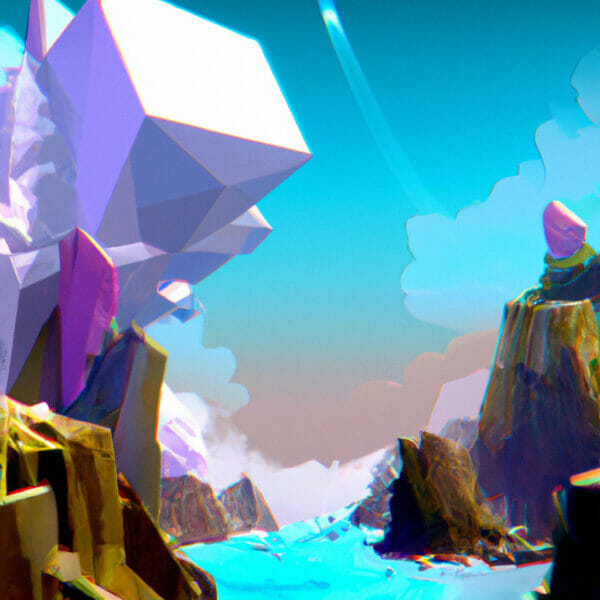Have you ever wanted to create your own immersive virtual reality (VR) game but didn’t know where to start? With advancements in technology, the demand for VR experiences has grown exponentially. As a coding enthusiast, this is your chance to learn how to make a VR game and deliver an unforgettable experience to gamers.
To get you started, we have compiled a list of the best learning tutorials to help you create your own virtual reality games. Our main focus in this article is on Zenva Academy’s beginner-friendly VR Mini-Degree. We will also be sharing resources from various websites that will guide you through different aspects of VR game development.
Table of contents
How Does Virtual Reality Work?
Virtual reality (VR) is a technology that transports users into a simulated, immersive environment. This is achieved using specialized hardware and software that tracks the user’s head, eye, and body movements and renders a realistic 3D environment in real-time. The user typically wears a VR headset with built-in sensors and display screens for each eye, creating a stereoscopic 3D effect and giving the illusion of depth. Additionally, audio and haptic feedback enhance the experience, further engaging the user’s senses of sight, touch, and sound.
How Does VR Benefit Games?
Virtual reality revolutionizes gaming by introducing new levels of immersion and interactivity:
- Increased immersion: Games feel more realistic through a first-person perspective, providing a unique sense of presence in the virtual environment.
- Enhanced interactivity: VR enables natural, intuitive interactions with the game world using motion-tracking and hand-tracked controllers, allowing players to perform actions as they would in real life.
- New gameplay possibilities: VR opens up novel game mechanics, including room-scale experiences, environmental manipulation, and spatial awareness puzzles that traditional 2D and 3D games can’t offer.
Why is Learning VR Important for Game Developers?
As the demand for immersive gaming experiences grows, learning VR development becomes valuable and necessary for game developers to stay competitive. By mastering VR, developers can:
- Exploit the growing VR market with emerging opportunities and consumer interest in new technology.
- Elevate their skills and portfolio to attract the attention of game studios and clients in a rapidly expanding industry.
- Stay ahead in the game development field by continuously learning, adapting, and innovating.
Popular Games Made with VR
Many successful VR games have captivated players and pushed the boundaries of immersion and interactivity:
- Beat Saber: A rhythm game where players slash blocks to the beat of the music.
- Half-Life: Alyx: An action-adventure game from the critically acclaimed Half-Life series, reimagined for virtual reality.
- Superhot VR: A first-person shooter where time moves only when the player moves.
- Asgard’s Wrath: An epic action-adventure RPG set in Norse mythology.
Best Tools for Making VR Games
Several powerful and accessible tools are available for VR game development, such as popular game engines, SDKs, and modelers:
- Game engines: Unity and Unreal Engine 4 are well-suited for VR development, providing built-in support, plugins, and assets.
- SDKs: Software development kits like Oculus SDK, SteamVR, and OpenXR enable developers to harness the capabilities of specific VR platforms.
- 3D modeling: Blender, Maya, and 3ds Max are popular choices for creating 3D assets for VR games.
Below, you’ll find a list of the best resources, tutorials, and courses for learning VR game development, including offerings from Zenva and other trusted sources.
Zenva Academy – VR Mini-Degree
The VR Mini-Degree offered by Zenva Academy is the perfect starting point for your VR game development journey. This comprehensive collection of courses teaches you how to build virtual reality applications with Unity, from coding basics with C# and Unity to movement, VR-optimized UI design, hand-tracked controllers, industry best practices, simulations, and games.
The curriculum is designed for both beginners and experienced developers, and it’s structured in a way that allows you to easily access relevant and interesting lessons.
Oculus Developer – Unity Tutorial
The Oculus developer tutorial is a step-by-step guide for creating your first VR app using the Oculus development platform. This resource covers the necessary software, hardware, and coding skills required to build a basic VR app. The tutorial also provides tips for optimizing the VR experience and troubleshooting common issues, as well as resources for further learning and support.
Unity – VR Solutions
Unity’s VR solutions offer flexible tools to create immersive VR experiences. It provides multiplatform support and optimized graphics with the Universal Render Pipeline. Features like the XR Interaction Toolkit and Visual Scripting enable developers to create high-level interaction systems and quickly prototype VR and AR experiences. Advanced developers can use Unity DOTS, Addressables, and customize their graphics pipeline for better performance.
ARVR Tips – Make a VR Game
This article from ARVR Tips introduces VR game development by focusing on the main aspects needed to make a VR game: a VR headset, a game engine, and a software development kit (SDK). The author recommends Unity as the best game engine for this purpose and highlights the importance of choosing the right SDK for the VR headset being used. Unity XR is mentioned as a helpful tool to integrate all VR SDKs together.
GameDev Academy – How to Code a VR Game
This article from GameDev Academy is a beginner’s guide to coding a virtual reality game. It covers the basics of VR, types of VR headsets, and experiences, and it provides recommendations for which game engines are best to use for VR development. The guide also highlights the importance of using best practices to avoid motion sickness when developing a VR game.
Indivisible Game – How to Make VR Games
This resource provides a comprehensive overview of the entire process needed to make VR games. It covers aspects such as planning, game engine selection, environment design, 3D modeling, game logic programming, testing, debugging, and game enhancement. It also guides you on publishing your game on platforms like Steam and Oculus and marketing it effectively.
Game-Ace – How to Make a VR Game
This article from Game-Ace presents a workflow for efficient VR game development, including preparation, production, and post-production. Additionally, it shares five best practices to follow when making VR games. If you lack resources or experience, outsourcing to a professional company like Game-Ace is an option, as they offer flexible business models and a range of game development services.
Conclusion
Creating a VR game can seem daunting at first, but with the right resources and tutorials, you will be able to build your own immersive experiences. The VR Mini-Degree from Zenva Academy is a beginner-friendly and comprehensive way to learn VR game development.
By utilizing the resources and tutorials mentioned in this article, you’ll find yourself well-equipped to take on the exciting world of virtual reality game creation.
Did you come across any errors in this tutorial? Please let us know by completing this form and we’ll look into it!

FINAL DAYS: Unlock coding courses in Unity, Godot, Unreal, Python and more.







